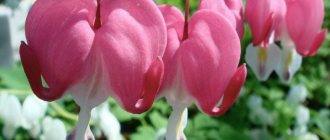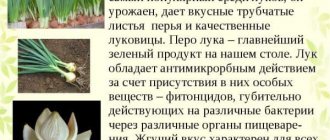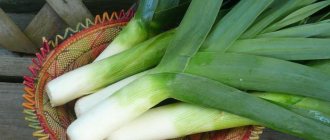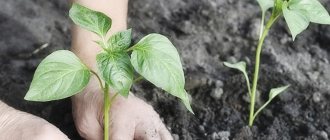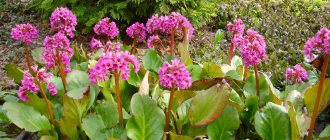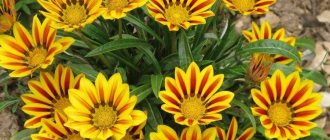Landing dates
There are one-, two- and perennial species and varieties. The plant propagates by seeds or vegetatively. Only some species do not produce seeds and reproduce only by green parts, for example, multi-tiered onions. Seedlings begin to be grown in early spring. Some varieties can be planted several times during the season to create a “green conveyor belt”. Planting in late autumn is also possible, it gives a super early harvest of green leaves.
Fertilizers
Onions do not particularly like organic matter, so you should not fertilize the beds with humus, compost or manure. The soil must be neutral. But for feeding during the growing season, he will thank you with a good harvest.
We introduce the first nutritional supplement in the third week after planting. It will be organic. A manure tincture is perfect (1 kg of manure + 10 liters of water, let stand for at least a day). Another option is bird droppings, diluted at the rate of 1kg/15l. More details about fertilizing are described here.
Stages of feeding onions with mineral fertilizers
In the second month of growth, mineral fertilizers can be introduced. Nitrogen in the strength of ammonium nitrate is introduced first, then potassium (potassium nitrate). Fertilizing is best done in dry form: scatter small amounts of fertilizer over the garden bed before watering or rain.
Preferred Onion Precursors
Before sowing, you need to decide on the required number of seedlings. The plant is demanding in terms of crop rotation on the site, so the locations and area of planting are determined in advance.
Popular vegetables that are good predecessors for onions include tomatoes, potatoes, eggplant, zucchini, squash, and lettuce. A significant amount of organic and mineral fertilizers are usually applied to these crops; before the onions are planted, they have time to dissolve well in the soil. The small number of pests common to these crops that overwinter in the ground also plays a role.
Onion pests often overwinter in plant debris from the previous harvest. The tops must be collected and destroyed before digging the beds in the fall. When using this waste to make compost, there is a high risk that pests will safely survive the frost.
Botanical description
Plants of the genus have a large spherical flattened bulb covered with purple, white or reddish shells. The leaves are basal, belt-shaped or linear, fistulous, the stem is swollen, thick, up to 1 m in height. The flowers are inconspicuous, small, located on long stalks and collected in umbrella-shaped inflorescences, reaching 40 cm in diameter in some species and covered in a sheath, which is preserved until the flowers begin to open. The ovary is unilocular or three-locular. The seeds are round or angular.
Onions bear fruit in August or September. Onions are most often grown in garden culture. We will tell you in this article how to plant onions, how to water onions, how to fertilize onions, when to dig up onions, how to store onions and what varieties of onions to prefer for open ground.
Required number of seeds
The mass of onion seeds will be approximately equal for all types and varieties. One gram of onion seeds contains 250 to 450 seeds. For leeks this figure is slightly higher, ranging from 300 to 500.
The shelf life of planting material is from 2 to 4 years. Then seed germination sharply decreases. It is optimal to use onion seeds from last year's harvest.
Low germination is due to the fact that the seeds do not ripen at the same time.
Criteria for choosing planting material
For growing as an annual crop, summer residents and farmers often choose domestically selected varieties recommended for cultivation throughout the country. The most popular are single- or low-germ, sweet or semi-sharp varieties of early or medium ripening - with a vegetative period not exceeding 110-130 days from sowing to harvesting. Multi-primordial varieties in annual crops turn out to be deformed.
Here are brief descriptions, characteristics and photos of some varieties and hybrids that are most suitable for growing from seeds in one season through seedlings:
“Annual Siberian” Obtained at the West Siberian Vegetable Experimental Station by selection from the “Tsituassky” variety. Zoned in 1950. The bulb is dense, rounded-flat, weighing 38-60 g. Dry scales are yellow, sometimes golden, juicy - white, with a semi-sharp taste. Maturation before harvesting is from 20 to 100%, keeping quality is good.
Early ripening variety, small-growing; has proven itself well when cultivated both in annual (from seeds) and biennial (from sets) crops
"Yukont" Early ripening single-germ variety. The period from complete germination from seeds to mass lodging of leaves is 83-93 days. The bulbs are round-flat, weighing 100-150 g, with a neck of medium thickness. Dry scales are purple, fleshy scales are slightly purple, with a pungent taste.
The variety is characterized by stable yield, good ripening and keeping quality of the bulbs
"Candy F1" (Candy F1) With direct sowing, it forms a bulb in one season. Mid-day hybrid. It is especially recommended for obtaining a super early harvest when growing seedlings. The bulb is round, very large, weighing up to 800 g. The scales are golden-yellow in color. The harvest is stored for up to 6 months.
“Candy F1” is a very early (85-90 days of growing season) semi-sweet hybrid bred by Seminis
“Red Airship F1” (“Red Zeppelin”, Red Zeppelin F1) Mid-early long-day hybrid. Forms large bulbs, weighing 150-250 g (up to 600 g). The color of the bulbs is dark red, rich, the shape is very even: from round to highly rounded. Recommended for growing in seedlings.
The harvest is used for fresh consumption, processing and long-term storage
“Strigunovsky”, “Early Pink”, “Amphora”, “Lyubchik” are also popular among domestic gardeners. Excellent yields are produced by semi-sharp semi-sharp varieties of onions, for example, “Kaba”, “Karatalsky”, “Krasnodarsky 35” and others.
Seed preparation
Regardless of whether the seeds are sown to obtain seedlings or directly into the ground, several agrotechnical measures need to be carried out:
Quality checking. The need for this operation is caused by poor germination of seeds; if it is insufficient, to obtain even germination during sowing it is necessary to increase the planting density.
To check, the seeds are wrapped in a damp cloth and left for a period of 10 to 20 days, periodically moistening. There are no special temperature conditions for this - onion seeds germinate at temperatures from +2 degrees Celsius. If less than 75% of the seeds have germinated, increase the planting rate;
Spores of fungal diseases are destroyed by soaking the seeds in a pink solution of potassium permanganate. Treating time is 10 - 12 hours immediately before sowing;
Before planting, the seeds are dried - when wet, it is difficult to distribute them evenly over the surface.
Protection from diseases
Onions are often susceptible to various diseases that can cause serious harm to the crop and completely destroy the crop.
Common onion diseases:
- Powdery mildew is a fungal disease that negatively affects the immunity and viability of the plant. To prevent the development of powdery mildew, seeds should be soaked in a weak solution of potassium permanganate before planting. To combat an existing fungal disease, the drugs Baikal, Fitocid M, Trichodermin, Fitosporin are used.
- Rust affects onion feathers. To combat the disease, drugs based on copper oxychloride are used.
- Gray rot - damages the neck part of the bulb, such a crop quickly deteriorates after harvesting. Fungicides from the triazole group are used against gray rot.
To combat onion diseases, you can use both chemicals and folk remedies - for example, garlic broth. To prepare it, pour 650 g of garlic cloves with a bucket of water and simmer over low heat for at least 3 hours. Dilute the prepared broth with clean water and use it to spray onion beds.
Soil preparation
Chernozems, loamy and sandy loam soils are suitable for planting onion plants.
On clay soil, seeds may not sprout at all. The reason for this is the hard crust that forms on the surface after precipitation or watering. To exclude this option, prepare the soil in advance by adding rotted compost or growing green manure.
Soil acidity should be between 6 and 6.5 units. If it is higher, liming is necessary.
Fresh manure is not applied when planting onions. Bird droppings are soaked in water for 3 to 5 days. During this time, ammonia, which is toxic to plants, will evaporate from it.
Soil preparation is carried out in autumn and spring.
After harvesting, organic residues are removed from the beds. They dig up the soil deeply, point-blank. The layer of earth is turned over, but the ground is not leveled. It is advisable to immediately add rotted organic matter; over the winter it will partially decompose and the beneficial substances will be absorbed into the soil.
In spring, the soil is dug up again and loosened well. Large lumps of earth will not allow the seeds to sprout together. Loosening will reduce the evaporation of moisture necessary for germination. The contact area between soil and seeds will increase, which will prevent them from drying out.
Soil requirements
Onions are not a very demanding plant, but only when optimal conditions are created will it be possible to achieve high yields. One of the requirements is the correct soil.
Onions can grow on sandy and loamy soils. Seeds do not do well in clay soil, as it is too dense for them. To cope with the problem, you need to add sand to the garden bed.
An important parameter for obtaining a good harvest is soil acidity. Optimal values are pH in the range of 6.4-7.9. Acidic soil needs to be alkalized. This is done using slaked lime, chalk or dolomite flour.
If the seeds are planted in loamy soil, the fruits will grow tasty. High yields can be obtained on sandy loam lands.
A lack of moisture in the soil has a negative effect on crop yields. In such conditions, plants grow poorly and the fruits are small. It is necessary to actively moisten the soil early in the development of the crop, as well as during the formation of fruits. After they ripen, watering is reduced. It is important not to overdo it with water, as its excess will prolong the growth period. Bulbs are poorly stored and are more often exposed to various diseases.
The site should be chosen so that it receives as much sunlight as possible. The crop, regardless of the chosen variety, does not develop well in the shade.
The optimal soil is the one on which the following plants were previously grown:
- cucumbers;
- zucchini;
- tomatoes;
- legumes;
- potato.
Any other greens are considered an excellent neighbor for onions: dill, lettuce, parsley. The crop is “friendly” with beets and carrots. Onions do not extract all resources from the soil, so next year you can plant other light-loving plants in the same area.
Sowing nigella
Nigella onion is not a special variety. Onion seeds are black in color - hence the name.
Sowing is carried out:
- in open ground in autumn;
- in greenhouses in early spring;
- for seedlings in a warm room;
- into the ground in spring.
For the first option, the beds are prepared in advance. Remove all plant debris. The earth is dug deep and thoroughly loosened. Rows are made in the garden bed.
After the onset of frost, nigella seeds are sown at a distance of 3 - 4 cm from each other. The rows are not buried, but only sprinkled with a thin layer of earth. In frosty weather, the bed should be covered with snow or, in its absence, with covering material. In the spring, as the soil warms up, the seeds will sprout.
In early spring, seeds are sown to obtain seedlings in shallow containers. Seedling cassettes are best suited. The cell size can be 2x2 cm with a depth of up to 5 cm.
The cassettes are installed in a warm room. Before emergence, temperatures are maintained at up to 25 degrees.
Onion seeds germinate at soil temperatures of 3–5 degrees. However, to obtain seedlings, a higher temperature in a greenhouse or greenhouse is required.
After germination, you can maintain a temperature of 10 -11 degrees during the day and 6 -7 at night.
Crop care (first month)
High-quality onion seeds begin to hatch in 8–10 days. In the first month after planting, the plants are weak and easily suppressed by weeds that have great growth force.
In the first one and a half to two months, onions need careful care. It consists of regular watering, weeding and fertilizing - that is, the entire complex of agrotechnical measures.
Water in the evening, as the soil dries, but less than once a week. Overmoistening of the soil has a detrimental effect on young plants. Abundant but infrequent watering has a beneficial effect on plants.
Water is used that has settled, heated in the sun or simply in the air. Cold weather causes stress in plants, slowing down their development.
When weeding weeds, it is advisable to pull them out along with the roots. It is convenient to do this when the harmful plants reach a height of 5–6 cm.
During the season, three feedings are carried out:
- the first - when the feather reaches a height of 10 cm;
- the second – 15 days after the first;
- the third - when the bulb reaches a diameter of 4 - 5 cm.
They use ready-made mineral fertilizers; the application rate is indicated by the manufacturers on the packaging.
Cultivation care
After completing the planting work, it is necessary to properly care for the onions. To do this, the soil is regularly weeded to remove weeds, the plant is watered, fed, and thinned out if necessary.
If the soil is moist, then the first full watering is carried out after 2 weeks. When it is dry, water is added sooner than after 10 days. The soil should remain moist and loose. This is very important at the initial stage of onion growth. The frequency of watering depends on the amount of seasonal rains. In June, watering is stopped.
Thinning must be carried out when planting onions with seeds or when applying sets in bunches. It is important to perform these manipulations on time before the plant has more than 4 leaves. If you thin out the crop later, the harvest will be small.
During the growing season, 2 feedings are performed. Fertilizers are applied for the first time in May, using organic matter. The second time feeding is carried out in mid-June. Potassium phosphate compounds are better suited for this purpose.
Onions love organic fertilizers. They are necessarily used on soils with insufficient fertility, but experienced gardeners do not recommend adding fresh manure to the soil.
Growing from sets
The use of sets allows you to get a harvest of onion in the first year of planting.
Gardeners who decide to use onion sets as planting material receive undeniable advantages over those who used nigella:
- large uniform harvest
- plants grown from seedlings are less susceptible to bolting;
- early stages of bulb ripening;
- resistance to diseases and pests.
To obtain such results, it is necessary to follow simple agrotechnical processes.
Pre-planting preparation of seedlings
The seedlings need to be prepared for planting; for this, the following manipulations are carried out:
- bulkhead bulbs. In its process, dry and disease-damaged specimens are rejected. Calibration by size will allow you to obtain a crop that is uniform in terms of ripening and size. Bulbs of the same size are planted in the garden bed;
- two weeks before planting, the onions are heated for 10 hours at a temperature of 40 - 45 degrees;
- on the last day before planting, the seedlings are soaked in a pink solution of potassium permanganate or specially purchased preparations;
- onions respond well to treatment with growth stimulants and complex fertilizers;
- Before planting, trim the tip of the top - this will speed up the forcing of the first leaves.
Landing
Onion sets are planted in prepared soil.
The depth of the furrows is selected for the size of the seedlings, the width between them is up to 40 cm.
Before planting, watering is carried out.
The distance between plants is from 6 to 8 cm. After sprinkling with earth, the tops of the bulbs should remain on the surface.
When choosing a planting site, take into account that the best neighbors in the garden for onions can be beets and carrots. Cucumber, tomatoes, and potatoes do not pose any threat to onions.
There may be exceptions for other types of onions. For example, chives do not tolerate proximity to beets.
Watering and fertilizing
Frequent watering is not required for onions to develop properly. In the first month, you need to ensure that the soil does not dry out. Watering should be done once a week, or 2 times in dry weather.
It is believed that in the first month of growing onion sets, the soil should be shed to a depth of 10–12 cm, and as the turnip grows, the moisture should penetrate 20 cm or more. A month before harvesting, watering is stopped, replacing it by loosening the soil. Watering at the last stage of cultivation will lead to an increased moisture content in the bulbs, and as a result, a reduction in shelf life.
Fertilizing is done for the first time as the leaves grow. This usually happens 20 days after planting. The indication for adding nutrients is the appearance of the plants: the pale appearance of the feathers and their thinness.
Water-soluble fertilizers are available in abundance on the market, and the rates of use are indicated on the packages. Fine-mesh watering cans are used for application. After finishing, it is necessary to wash off the remaining fertilizer solution from the leaves with a stream of water.
Harvesting
Harvesting begins as the bulbs ripen en masse. This is done in dry weather. Crops harvested in the rain will not be stored for long. 20 - 25 days before the expected ripening date, stop watering. A sign of ripeness is the lodging of the feather. Harvesting is carried out in a short time, preventing the onion from starting to grow again.
Carefully digging up the bulbs, pull them out along with the roots. In sunny weather, onions are dried directly in the garden. When it rains, the harvest is brought indoors and prepared for storage there.
Raising the temperature to 40 degrees for 10 hours will help avoid cervical rot.
After drying, a tail of about 3–5 cm is left on the bulbs. Damaged specimens are selected and used immediately after collection. For storage, healthy bulbs without signs of rot or disease and without mechanical damage are left. The containers are boxes and nets that provide air circulation.
Variety of onions
There are two large groups of onions intended for cultivation in open ground:
- A group of varieties for northern regions, where daylight hours are about 16 hours. Only with such a long day will large bulbs form and seeds develop. Northern varieties with short daylight hours will only have time to form green feathers.
- Southern varieties of onions can form large, dense and juicy onions with short daylight hours (day length is about 12 hours). If you plant such varieties in regions with long daylight hours, the bulb will form and store poorly.
Currently, breeders are developing varieties that do not respond to daylength. When planting them in both northern and southern regions, you can get a good harvest.
Before sowing in open ground, it is recommended to treat planting material of any variety with growth stimulants and disinfectant solutions.
Planting onions before winter
Autumn planting gets an early harvest by the beginning of July.
For planting before winter, select the smallest available heads. They are unlikely to last until spring. If stored for a long time, the onions will simply dry out.
Before winter, seedlings are planted a little earlier than nigella. We need to do this before frost sets in. Select days when the night temperature begins to drop to 2 - 3 C.
Preparation of planting material occurs according to the previously described method: selection, treatment with antifungal and stimulating drugs.
Harvest
Harvesting begins after a third of the onion leaves turn yellow, dry out and fall to the ground. At the same time, the neck of the bulb becomes soft, thins and dries.
After digging, the crop can be dried directly in the garden. If the weather is rainy, then the onions are put indoors. It takes about two weeks for the bulbs to dry completely.
To store onion crops, it is better to choose a cool, dry, dark room with good ventilation. The air temperature should be approximately +3 degrees.
Types and varieties of onions
The species and varietal composition of onions is very diverse. They differ in the time of cultivation, the structure of their green and underground parts. Smell and taste may vary significantly. Any gardener can choose a variety according to his taste preferences. Unfortunately, not all types of onions are widely used. The existence of some is known only by hearsay.
Bulb onions
This type of plant is familiar to everyone. The underground part, the onion, is eaten. Green feathers are tough, and cutting them off en masse during the growing season can negatively affect the harvest.
It is grown from seeds - nigella, or by planting sets.
Leek
Its second name is pearl. Grown to produce a stem - legs. It has a fleshy structure and a delicate taste. During storage, the vitamin C content does not decrease. The leaves of the plant are ribbon-shaped. The place of the bulb develops a bake. Its length can reach from 15 to 40 cm with a thickness of up to 8 cm.
Seeds of this species lose their viability after two years. This is worth considering when purchasing.
Famous varieties: Jolant, Karantansky, Bandit, Detri, Ginka, Vesta, Goliath, Tango.
Shallot
It is found under the names of multi-stellar or family onions. You can often hear the name “kushchevka”. The peculiarity of the structure is the formation of a nest from one planted bulb, which can contain up to 10 bulbs. Their size, however, is small - up to 3.5 cm in diameter.
This type of onion actively accumulates nitrates, so it is advisable to fertilize it with organic fertilizers.
Varieties: Kuban yellow, Zvezdochka, Russian violet, Siberian yellow, Bonilla.
Chives
There are its names: rezanets, skoroda, rezun. Rich in vitamins.
Designed for growing on greens. High sugar content gives a sweet taste. Very frost-resistant, suitable for growing in northern regions. They are grown for 3–4 years in one place; in the 4th year of cultivation it produces up to 150 branches in one bush. Cutting is carried out 2–3 times per season. Propagated by sowing seeds or dividing the bush after 2–3 years of cultivation.
Popular varieties: Moscow early ripening, Siberian, Bohemia.
fragrant onion
This species, often called Japanese, has flat leaves that are rounded at the tips. It grows in one place for 4–5 years. By this time, it forms up to 25 branches simultaneously. Contains a lot of carotene and ascorbic acid. The false bulb has a diameter of up to 1.3 cm. It blooms with beautiful white inflorescences about 5 cm in diameter. Propagated by seeds or vegetatively, dividing a 2-3 year old bush.
Fragrant onions are zoned for different climatic zones; Dzhusay and Fragrant are popular.
Multi-tiered bow
Common names: Egyptian, Pocambolo. During the growing season, it forms 2–3 tiers of aerial bulbs. The plants are cold-resistant, greenery grows in March. It reproduces by the same aerial bulbs. Planting material is collected immediately after ripening - the bulbs on the plant quickly deteriorate.
Famous varieties: Odessky, Gribovsky 38, Likova, Pamyat.
Onion
Often called sandy or tartar onion. Biennial plant. Instead of a bulb, it forms a thickening of the stem. Cultivated for feathers. In the second year the plant blooms. It can grow in one place for up to 4 years.
Aging Bow
Wild onions - puchhu, mangyr, wild onion. Distributed in Mongolia, Korea, and the Caucasus. The leaves are flat. As the plant matures, it acquires a pungent taste. The bulbs are cut into rings and dried. Used in first courses.
Slime Bow
This type of onion has flat, juicy and tender leaves. The taste is not spicy with a slight aftertaste of garlic. Propagated by seeds or through seedlings.
Alrat. Albert, Star, Cascade.
Cheremsha
The plant is classified as garlic due to its distinct odor. In fact, this is also an onion; the name “bearish” is found. Unlike garlic, no smell remains after eating. The leaves are used fresh, pickled or salted in winter.
The names of some varieties come from the name bear: Bear cub, Bear delicacy, Bear ear.
Ramson does not grow well in sunny places. The best place for it is partial shade.
Compliance with crop rotation
To get a rich onion harvest, you need not only to choose the right site for its cultivation, but also suitable “predecessors”. It is advisable to plant it after crops that have been generously fed with organic fertilizers.
Optimal “predecessors”:
- potato;
- tomatoes;
- radish;
- carrot;
- cabbage;
- cucumbers
Experienced gardeners do not advise planting onions immediately after onions. In this area, the soil is already depleted and does not contain the nutrients that the vegetable needs for growth and fruiting. Onions can be planted in beds after onions no earlier than 4-5 years later. Carrots and garlic are also considered undesirable “precursors”.
Growth phases
The process of growing onions has several stages. It is important to distinguish between stages of growth for timely implementation of agrotechnical measures - weed control, fertilizing, watering:
- seed germination (in soil);
- loop (sprout in the form of a loop);
- flag (the sprout begins to straighten);
- seedling phase (green feather appears);
- beginning of bulb formation;
- formed bulb (with developed green feather);
- ripe onion (with yellowed and fallen feathers).
You will find the subtleties of growing onions in a greenhouse as a business in winter and all year round here.
By following the recommendations for growing onions, experimenting, and making adjustments, you can get good harvests every year. And the bulb will delight you with greenery in the winter months if you arrange it on the windowsill.
Green onions are a very healthy addition to any dish. You can learn about growing it for greens, including at home, on our website.
Introduction
The scientific name of the onion Alluim comes from the Celtic “all” - burning. Its specific sharp taste is due to the presence of special essential oils. In addition, onions contain about a dozen useful substances from sugars and organic acids to various enzymes and mineral compounds. It is safe to say that by consuming onions, the body can be provided with most of the components it needs, obtained from plants. In addition, onions stimulate the secretion of digestive juices and have bactericidal and anthelmintic properties.
Onions are ideal as a garden crop - they can be grown in plots of any size. Using relatively small planting areas, you can provide yourself with a supply of onions for a fairly long period. The yield of onions when privately grown on an individual plot can be up to 300 kg per hundred square meters. To obtain such indicators, you need to know the rules for growing a plant.
Planting methods
There are no special requirements for the location of seedlings in the soil. Plant the sets in one row, or in two- and three-row ribbons. The choice of method depends on the preferences of the gardener. It is important to remember that the arbage sits exclusively vertically and it is necessary to slightly compact the soil above the onion.
During planting in one row, the seedlings are immersed in holes as deep as the diameter of the bulb with a frequency of 9...10 centimeters between seeds. The distance between the rows should be at least 20 cm. Options for a dense arrangement of the arbage are possible, but then thinning will have to be carried out.
Initially, planting material is immersed in the ground every 2 cm. When the first feathers appear, it should be thinned out to a frequency of 4 centimeters. Plucked young leaves can be safely eaten. A month later, it is necessary to carry out a second thinning, bringing the gaps between the bunches of greenery to the size of the row spacing, that is, 7...10 centimeters.
When belt sowing, gaps of 8...12 cm are left between the rows, and the ribbons themselves are separated by a space 22...25 cm wide.
